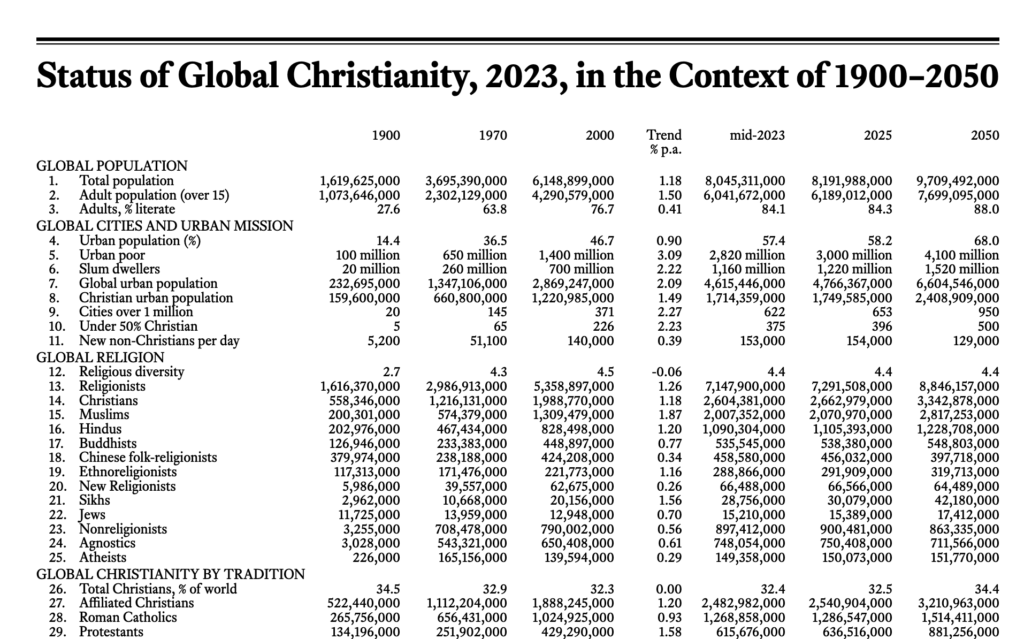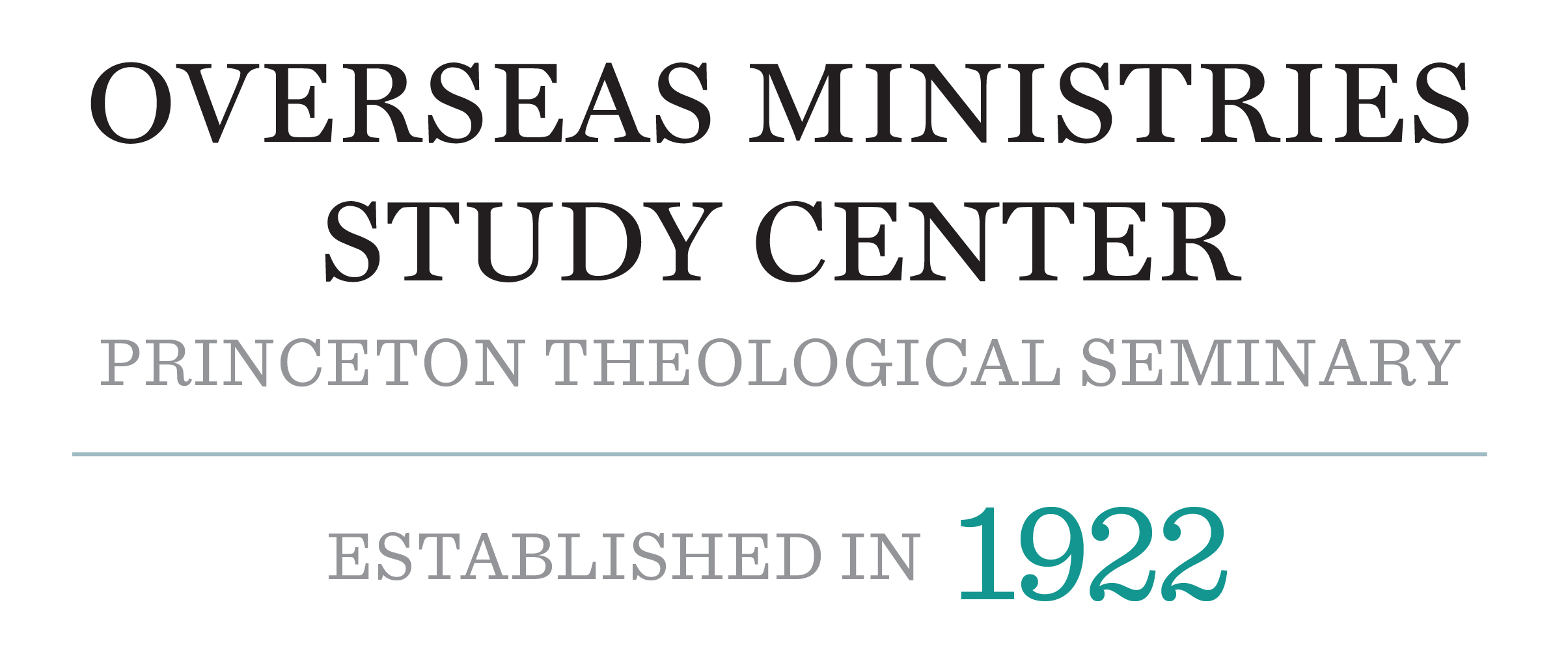by Gina A. Zurlo, Ph.D. – Co-Director – Center for the Study of Global Christianity
This post is part of The Occasional’s “Numbers and Trends” series, dedicated to sharing work, analysis, and perspectives from our friends and partners at the Center for the Study of Global Christianity based at Gordon-Conwell Theological Seminary.

Every January for the last 39 years, researchers at the Center for the Study of Global Christianity have been publishing data in the International Bulletin of Mission Research. It’s one of the most-cited articles in the IBMR. It presents, in summary form, an annual update of the most significant global and regional statistics relevant to understanding the current status of global Christianity and mission. The table has changed slightly over the years but retains a core of information on trends in world religions, major Christian traditions and movements, Christianity by continent, as well as Christian mission, evangelization, media, and finance. Each year we also provide commentary on the text, highlighting themes we find particularly important in that year. For example, consider the last ten years of headlines:
- World Christianity and Religions 2022: A Complicated Relationship
- World Christianity and Mission 2021: Questions about the Future
- World Christianity and Mission 2020: Ongoing Shift to the Global South
- Christianity 2019: What’s Missing? A Call for Further Research
- Christianity 2018: More African Christians and Counting Martyrs
- Christianity 2017: Five Hundred Years of Protestant Christianity
- Christianity 2016: Latin America and Projecting Religions to 2050
- Christianity 2015: Religious Diversity and Personal Contact
- Christianity 2014: Independent Christianity and Slum Dwellers
- Christianity 2013: Renewalist and Faith and Migration
We use the annual article to communicate important findings, such as:
- In 2014, Latin America became the continent with the most Christians for the first time in history (581 million), replacing Europe (559 million).
- In 2018, Africa had overtaken Latin America as the continent with the most Christians, with 599 million (597 million in Latin America).
- In 2019, we identified several gaps in our quantitative understanding of global Christianity and mission: mission and money, short-term mission, and women in World Christianity and mission. Since then, we’ve completed a Women in World Christianity Project (funded by the Louisville Institute and the Religious Research Association).
- The Korean Global Leadership Forum hosted a hybrid conference on mission and money, and produced a book on it in 2022, the first major treatment of the subject since Jonathan Bonk’s Mission and Money in 2010 (see Jonathan J. Bonk, Michael D. Distefano, J. Nelson Jennings, Jinbong Kim, Jae Hoon Lee, eds. Missions and Money: Global Realities and Challenges (Littleton, CO: William Carey Publishing, 2022)).
We also share with our readers enhancements in our methodology, such as in 2014, where we announced the retirement of the term “marginal Christian” and incorporated Mormons, Jehovah’s Witnesses, and some other such self-identified Christian groups in the “Independent” category.

This year’s article is titled, “World Christianity 2023: A Gendered Approach.” It builds off the call for further research from 2019 where we identified a lack of gendered quantitative analysis in World Christianity. Starting that year, we began to fill that gap through our Women in World Christianity Project, which produced a dataset, for the first time, of the gender makeup of every Christian denomination in every country of the world. The project revealed that, according to official statistics, global church membership is 52% female, and that Mongolia reports the highest share of Christian women (63%).
However, this study had severe limitations based on data availability. Many churches, denominations, and Christian networks that collect data on their members and affiliates either do not collect data on gender, or they do not publicly report it. The chronic lack of data related to women in World Christianity makes producing a global gender analysis of World Christianity extremely difficult. For example, significant discrepancies exist between data obtained from government censuses and data from religious communities themselves. While a census might report that Baptists are 52% female, data from the Baptists themselves (if available) are typically much higher, perhaps upward of 75%. A further discrepancy exists between membership versus attendance, where the former is typically equal between men and women, but the latter is dominated by women.
This project revealed a substantial need for Christian denominations, networks, and organizations to have a greater gender awareness of their affiliates. Without good data, good decisions cannot be made, and good data recognize the differences in experience, perspective, and needs of women.




